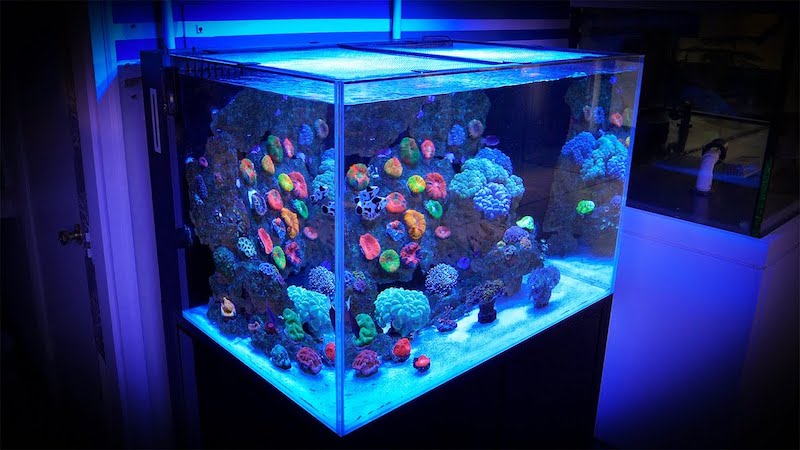Australian Scolies, officially known as Homophyllia bowerbanki, are an Australian endemic coral that demonstrates some of the wildest colors of almost any coral species. As you may have guessed by now, the flat vertical aquascape in the Australian reef display was designed with special consideration for this very special LPS coral.
It’s been just under three months since this tank was set up and already it is home to a respectable population of corals, most notably the Scolies but complimented by Lords, Micromussas, Bowerbankis, a few Blastomussa and a Moseleya latistella. One group of corals we thought would be perfect for this tank is an assortment of various bubble coral species but these are doing a little too well, having grown and expanding much more than we expected meaning they will have to find a different aquarium home in the near future.
At 90 days since first water this tank went through a very minimal procession of light algae dusting over which time the bone white Marco rock has become very dark, adding an extra element of contrast to the totally fluorescent coral colors. Speaking of which, we also started this tank with one Illumagic Blaze Mini, then added another, but most recently we replaced all the LEDs with Illumagic’s all-blue Actinic clusters.
As much as we push back against the windex reef light programs, this tank is one that really shines the most under azure lighting. Having a wide range of LEDs with spectral emission peaks in the 400 to 500nm spectrum helps to bring out the most fluorescent colors possible and it really shows with this assortment of deeper water, lower energy corals.
It’s very easy these days to overlight your corals but it’s much harder to know when you have exactly enough light for the benefit of the corals, without growing an excess of algae. The 100 watts of power on the Australian reef tank might seem like very little but it is both a testament to fine tuning the spectrum for the corals and mounting and angling the Blaze Mini to make the most of the available photons produced.



